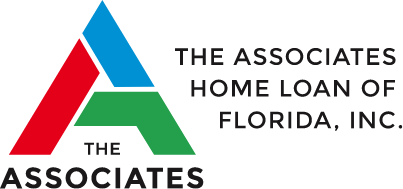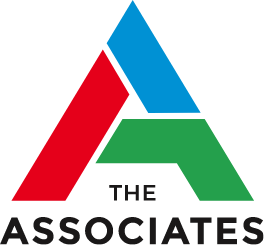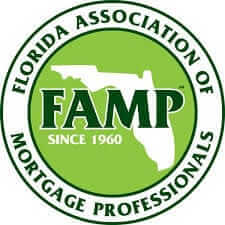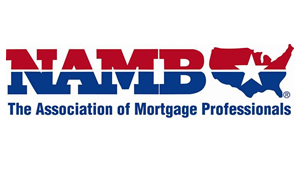
6 Commercial Real Estate Financing Private Loans for 2024
Individual investors, small business owners, and large real estate corporations know that investment properties are among the best income-producing assets for growing wealth. But while building wealth this way seems idyllic, getting started can seem impossible.
Commercial real estate financing is somewhat different from getting a residential mortgage. However, you have an abundance of financing options to choose from, so there’s likely something that will suit your needs.
If you’re a borrower looking for commercial real estate financing, check out these six options you can consider.
1. Commercial Bank Loans
A commercial real estate loan (CRE loan) is what you think of as traditional financing. Offered by FDIC-insured banks, credit unions, and other lenders, these loans have an amortization period of five to 30 years.
There are many Freddie Mac and Fannie Mae guaranteed commercial loan options for various non-owner-occupied property types, such as:
- Hotels
- Medical facilities
- Multifamily rental buildings
- Office buildings
- Warehouses
- Vacant land
These loans have standard requirements and terms you would find with any mortgage or commercial loan, such as:
- Down payment
- Loan amount
- Loan terms: balloon payment vs. full amortization
- Loan-to-value ratio (LTV)
- Interest rate and terms: fixed-rate vs. variable rate
- Origination fee
However, if you don’t qualify for a traditional loan but already own commercial property, you could consider applying for an investment real estate line of credit instead. You may also be able to use any working capital your business has to secure a loan.
Pros
Commercial loans have several advantages, including:
- Access to an established banking system
- Lower interest rates than some other options
- Protracted repayment periods
- Regulatory stability
Furthermore, you can use them to construct, refinance, rehabilitate, or purchase nearly all commercial properties.
Cons
The biggest downside of traditional commercial real estate loans is the qualification requirements, which can lead to a lengthy approval process. Lenders especially consider small businesses risky, so many find it challenging to secure financing. Thus, qualifications can be stringent.
Some of the eligibility qualifications include:
- Business credit: minimum FICO Small Business Scoring Service (SBSS) credit score of 155, though businesses with a lower credit score may be eligible for other loans
- Business finances: your debt service coverage ratio (DSCR) should be 1.25 or greater
- Business structure: must have a business entity structure like a limited liability company (LLC) or S-corp
Additionally, CRE loans from traditional commercial lenders typically come with prepayment penalties.
2. Hard Money Loans
Hard money loans are similar to bridge loans. The difference is that they are usually available from private lenders and use the property to secure the loan.
Investors often use hard money loans for fix-and-flip properties.
Pros
This type of loan offers quick financing, which is ideal for time-sensitive investment projects. Hard money loans also offer flexible and swift approval terms because they focus on the property’s value, not creditworthiness.
Further, early repayment is possible with no additional fees.
Cons
Traditional commercial mortgage lenders don’t offer hard money loans, so you must explore alternative lenders.
Also, these loans have higher interest rates because of the increased risk. The short repayment terms (a maximum of two years at best) are only feasible for some. Plus, with the property acting as collateral, you risk losing the property if you begin to miss monthly payments.
3. Private Equity and Joint Ventures
Private equity firms buy and manage investments to sell them at a profit. A joint venture is when two or more parties work together to complete a project.
Both require the following:
- Due diligence
- Negotiations
- Risk management
Pros
The best benefit of entering a joint venture or using private equity funding is that they allow you to fund large projects that may not otherwise receive funding, which is why many significant investment projects use this financing option instead of a traditional construction loan. You can also leverage resources for profitability and access more industry connections.
Moreover, no one investor will experience tremendous risk because of the shared investment.
Cons
Unfortunately, the disadvantage of a joint venture or using private equity funding is that the complexity requires detailed negotiations, which can cause disagreements and delays.
Also, shared decision-making will require each investor to make compromises.
4. Commercial Bridge Loan
Another type of commercial property loan is a bridge loan. Bridge loans are short-term loans (six months to three years) that provide cash flow during a transitional period. In other words, they “bridge the gap” between current capital needs and a more long-term financing solution.
Pros
This commercial lending option provides quick funding and flexible terms. Those with poor credit or unfinished leases may still qualify.
Cons
Because of their short-term nature and increased risk, bridge loans have higher interest rates than traditional commercial loans. Short-term repayment terms can be complex if you don’t promptly secure long-term financing.
5. USDA CRE Loans
The U.S. Department of Agriculture offers the CRE loan program to support developing and improving commercial properties in rural areas. (They also have a home loan program; find out more here.)
Pros
USDA CRE loans often have lower down payment requirements, highly competitive interest rates, and relaxed credit requirements. They are also readily available to many businesses.
Cons
Because of their designed purpose, USDA CRE loans have location restrictions. They are also highly competitive because of the favorable terms.
6. SBA 7(a) and 504 Loans
Similar to how the Federal Housing Administration guarantees FHA loans, the Small Business Administration guarantees SBA loans.
SBA 7(a) provides borrowers with up to $5 million, whereas SBA 504 consists of a Certified Development Company (CDC) loan and a bank loan for a borrowing power of $5.5 million.
Pros
Traditionally, these loans have lower interest rates and more favorable terms. They also have less stringent eligibility requirements and an extended repayment period.
Further, their use is versatile. You can use SBA loans for the following:
- Acquisitions
- Expansions
- Renovations
Cons
These small business loans require a lot of paperwork and sometimes have extended processing times.
While you should plan to have documents like business disclosures and tax returns readily available, you will likely need to provide a Personal Financial Statement (SBA Form 413), personal tax returns and credit history, and documentation of business assets.
Let Us Meet Your Commercial Real Estate Financing Needs
Commercial real estate financing is never a one-size-fits-all solution. At The Associates Home Loan of Florida, Inc., we offer an array of financing (and refinancing) options for investors of all sizes and have a track record of providing excellent customer service.
Explore your financing options and apply now by completing a loan application on our website.
Recent Posts
Understanding B/C Loans: Your Pathway to Homeownership
What is a B/C Loan? A B/C loan, also known as a subprime loan, is a type of mortgage designed for borrowers with lower credit scores. These loans cater to individuals who may have facedRead More
6 Commercial Real Estate Financing Private Loans for 2024
Individual investors, small business owners, and large real estate corporations know that investment properties are among the best income-producing assets for growing wealth. But while building wealth this way seems idyllic, getting started can seemRead More
7 Creative Financing Options for Real Estate Investments
A 2024 Bankrate survey found that 78% of Americans believe homeownership is a vital component of the American dream. But what if you could have more than homeownership? What if you could make passive incomeRead More









